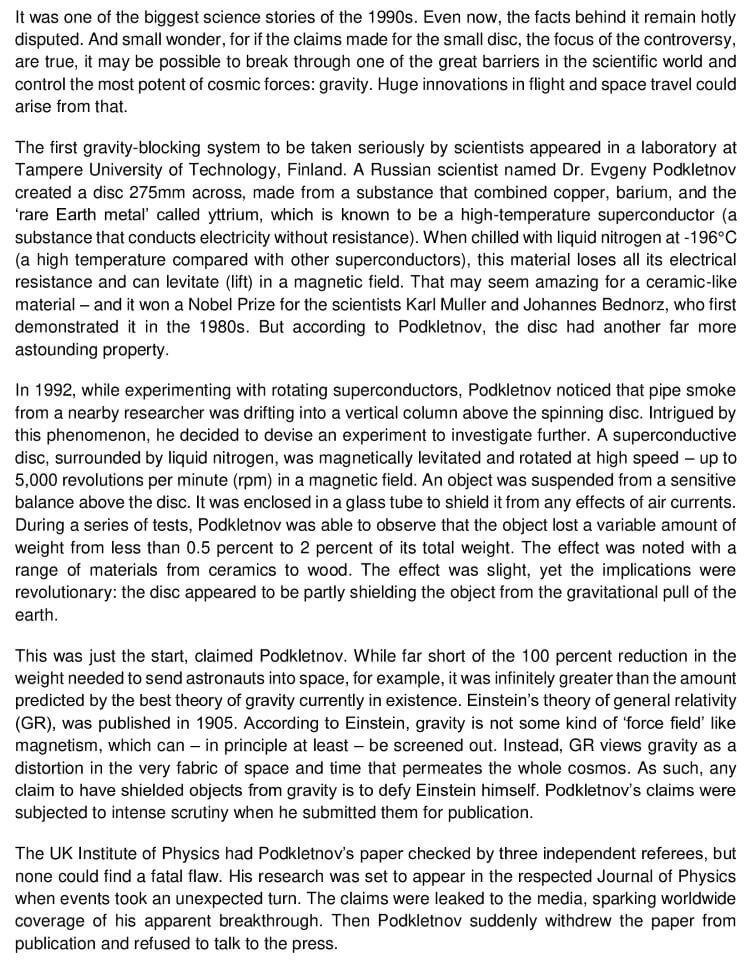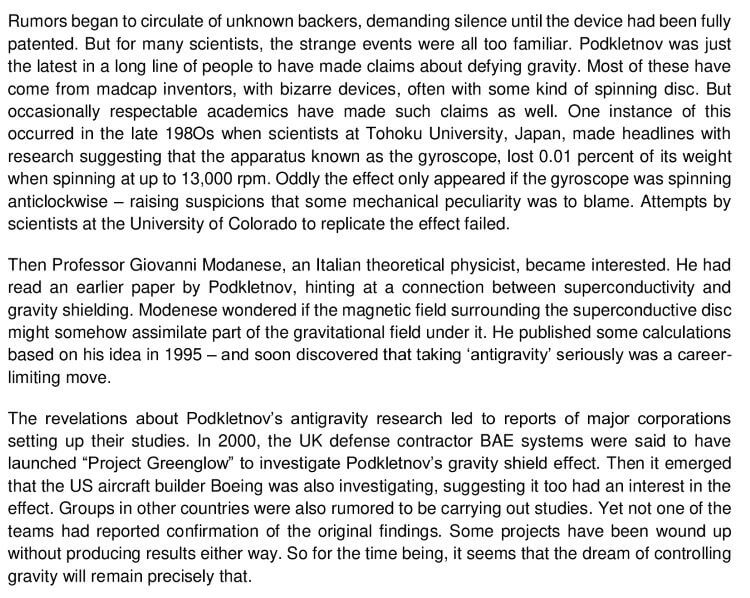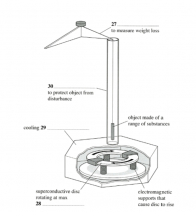The First Antigravity Machine - IELTS Reading Answer
8 min read
Updated On
-
Copy link
You will find IELTS Academic Reading passage, The First Antigravity Machine Reading Answers, in this article. Practise this one and you will get an idea of how to deal with IELTS Reading.
Table of Contents

Limited-Time Offer : Access a FREE 10-Day IELTS Study Plan!
The First Antigravity Machine is a real reading test passage that appeared in the IELTS Academic exam. With diligent practice, the Reading Module can be the top-scoring category for IELTS aspirants. To score well, you must learn how to scan the given text, highlight keywords using the IELTS Reading keyword techniques and locate the answer within the limited duration of the exam in order to achieve the desired band score in the IELTS Academic Reading exam.
By solving and reviewing Sample Reading Questions from past IELTS papers, you can ensure that your Reading skills are up to the mark. Take the practice test, The First Antigravity Machine, below and try more IELTS reading practice tests from IELTSMaterial.com.
The question types found in this passage are:
- IELTS Reading Diagram Completion (Q. 27-30)
- IELTS Reading Matching Features (Q. 31-35)
- IELTS Reading True/No/Not Given (Q. 36-40)
Reading Passage
The First Antigravity Machine


Question 27 – 30

Questions 31-35
Classify the following findings as belonging to
Classify the following as belonging to
A. Podkletnov
B. Tohoku University
C. Modenese
31 The experiment only works if the equipment moves in a particular direction.
32 Varying amounts of weight are lost as a result of the test
33 Gravity could be absorbed by a magnetic field.
34 Superconductive material seems to scan an object from gravity
35 Weight loss occurs when the equipment rotates at speeds reaching 13,000 rpm
Question 36 – 40
TRUE if the statement agrees with the information
FALSE if the statement contradicts the information
NOT GIVEN if there is no information on this
36 Podkletnov won a prize for his initial work on superconductive substances
37 A chance observation led Podkletnov to experiment with gravity blocking
38 Einstein challenged earlier experiments on antigravity
39 Modenese suffered professionally after following up on Podkletnov’s findings
40 An aircraft company announced that it had replicated Podkletnov’s results.
Answer for The First Antigravity Machine IELTS Reading Answers with Location and Explanations
Check out the answer key for this IELTS Reading passage, The First Antigravity Machine, with detailed explanations.
27 Answer: (sensitive) balance
Question type: Diagram Completion
Answer location: Paragraph 3, line 4
Answer explanation: The 4th line of paragraph 3 states that a superconductive disc, surrounded by liquid nitrogen, was magnetically levitated and rotated at high speed – up to 5,000 revolutions per minute (rpm) in a magnetic field. The object was suspended from a sensitive balance above the disc. It was enclosed in a glass tube to shield it from any effects of air currents. We can understand from these lines that the disc is surrounded by nitrogen, which is levitated and rotated at high-speed. Thus, sensitive balance is used to measure weight loss. So, the answer is sensitive balance.
28 Answer: 5,000 revolutions per minute
Question type: Diagram Completion
Answer location: Paragraph 3, line 4
Answer explanation: The 4th line of the 3rd paragraph illustrates that a superconductive disc, surrounded by liquid nitrogen, was magnetically levitated and rotated at high speed – up to 5,000 revolutions per minute (rpm) in a magnetic field. It is evident from these lines that the superconductive disc is rotating at a maximum speed of 5000 revolutions per minute. Thus, the answer is 5000 revolutions per minute.
29 Answer: liquid nitrogen
Question type: Diagram Completion
Answer location: Paragraph 3, line 4
Answer explanation: Line 4, Paragraph 3 states, “A superconductive disc, surrounded by liquid nitrogen, was magnetically levitated and rotated at high speed – up to 5,000 revolutions per minute (rpm) in a magnetic field.” We understand that the superconductive disc was surrounded by liquid nitrogen, which is extremely cool. Hence, the answer is liquid nitrogen.
30 Answer: glass tube
Question type: Diagram Completion
Answer location: Paragraph 3, line 6
Answer explanation: The 6th line of paragraph 3 states that an object was suspended from a sensitive balance above the disc. It was enclosed in a glass tube to shield it from any effects of air currents. We can deduce from the lines that the object above the disc is enclosed in a glass tube to protect the object from disturbance. Thus, the answer is a glass tube.
31 Answer: B
Question type: Matching Features
Answer location: Paragraph 6
Answer explanation: In paragraph 6, it is mentioned that the effect only appeared if the gyroscope was spinning anticlockwise – raising suspicions that some mechanical peculiarity was to blame. We can understand from these lines that when the scientists of Tohoku University suggested that the gyroscope lost 0.01% of its weight when spinning up at 13,000 rpm, the effect appeared as if the gyroscope was spinning anticlockwise, raising doubts. Thus, the answer is B.
32 Answer: A
Question type: Matching Features
Answer location: Paragraph 6, line 7
Answer explanation: The 7th line of the 6th paragraph states that Podkletnov was able to observe that the object lost a variable amount of weight from less than 0.5 percent to 2 percent of its total weight. These lines suggest the varying amount of weight is lost as a result of the test. Thus, the answer is A.
33 Answer: C
Question type: Matching Features
Answer location: Paragraph 7
Answer explanation: In paragraph 7, we find a reference for Modenese, which states that Professor Giovanni Modanese, an Italian theoretical physicist, became interested after reading an earlier paper by Podkletnov, hinting at a connection between superconductivity and gravity shielding. Modenese wondered if the magnetic field surrounding the superconductive disc might somehow assimilate part of the gravitational field under it. Modenese felt that gravity could be absorbed by a magnetic field. Thus, the answer is C.
34 Answer: A
Question type: Matching Features
Answer location: Paragraph 3, last line
Answer explanation: Paragraph 3 states the fact that a superconductive disc is rotating at a maximum speed of 5000 revolutions per minute. But in the last line, Podkletnov has revealed that the superconductive disc (material) appeared to be partly shielding the object from the gravitational pull of the earth. Therefore, it was Podkletnov who said that Gravity could be absorbed by a magnetic field. Hence, the answer is A.
35 Answer: B
Question type: Matching Features
Answer location: Paragraph 6, line 7
Answer explanation: The 7th line of paragraph 6 states that the scientists of Tohoku University made headlines by suggesting that the apparatus known as the gyroscope, lost 0.01 percent of its weight when spinning at up to 13,000 rpm. Thus, it’s clear that weight loss occurs when the equipment rotates at a speed reaching 13,000 rpm. Hence, the answer is B.
36 Answer: False
Question type: True/False/ Not Given
Answer location: Paragraph 2
Answer explanation: Paragraph 2 states that a Russian scientist named Dr. Evgeny Podkletnov created a disc 275mm across, made from a substance that combined copper, barium, and the ‘rare Earth metal’ called yttrium, which is known to be a high-temperature superconductor (a substance that conducts electricity without resistance). In the last line of the paragraph, it is mentioned that it may seem amazing for a ceramic-like material – and it won a Nobel Prize. These lines indicate that Podkletnov’s superconductive disc similar to ceramic-like material won a prize for his initial work. Thus, the statement contradicts the information, so, the answer is False.
37 Answer: True
Question type: True/False/ Not Given
Answer location: Paragraph 3
Answer explanation: Paragraph 3 illustrates that in 1992, while experimenting with rotating superconductors, Podkletnov noticed that pipe smoke from a nearby researcher was drifting into a vertical column above the spinning disc. Intrigued by this phenomenon, he decided to devise an experiment to investigate further. In the same paragraph, it is stated that Podkletnov was able to observe that the object lost a variable amount of weight from less than 0.5 percent to 2 percent of its total weight. Therefore, it is clear that Podkletnov decided to experiment with gravity blocking. So, the answer is True.
38 Answer: Not Given
Question type: True/False/ Not Given
Answer location: Paragraph 4,line 4
Answer explanation: We find a reference for Einstein in the 4th line of the 4th paragraph, which states that according to Einstein, gravity is not some kind of ‘force field’ like magnetism, which can – in principle at least – be screened out. These lines suggest that Einstein revealed that gravity is not a kind of force field like magnetism. Thus, it is not mentioned anywhere that Einstein challenged earlier experiments on Antigravity.
39 Answer: True
Question type: True/False/ Not Given
Answer location: Paragraph 7, last line
Answer explanation: The last line of the 7th paragraph states that Modenese published some calculations based on his idea in 1995 – and soon discovered that taking ‘antigravity’ seriously was a career-limiting move. These lines indicate that Modenese suffered professionally after following up on Podkletnov’s findings. Hence, the answer is True.
40 Answer: False
Question type: True/False/ Not Given
Answer location: Paragraph 8
Answer explanation: Paragraph 8 illustrates that Podkletnov’s antigravity research led to reports of major corporations setting up their studies. In 2000, the UK defense contractor BAE systems were said to have launched “Project Greenglow” to investigate Podkletnov’s gravity shield effect. Then it emerged that the US aircraft builder Boeing was also investigating, suggesting it too had an interest in the effect. We understand from these lines that a UK defense contractor and a US aircraft builder replicated Podkletnov’s research on gravity. However, none of them were able to achieve the results. Hence, the statement contradicts the information, so, the answer is False.
Check More IELTS Reading Answers
Practice IELTS Reading based on question types

Start Preparing for IELTS: Get Your 10-Day Study Plan Today!
Recent Articles

Nehasri Ravishenbagam

Haniya Yashfeen

Haniya Yashfeen

Haniya Yashfeen




Post your Comments